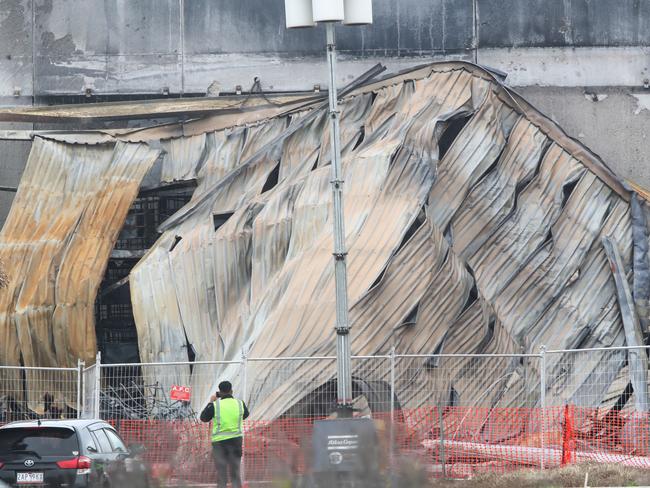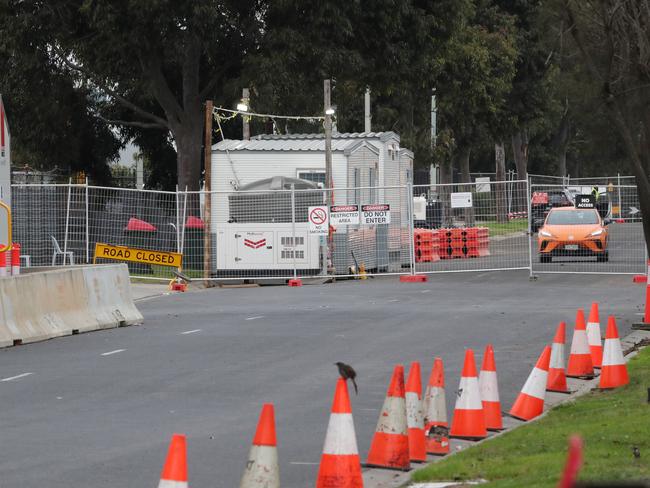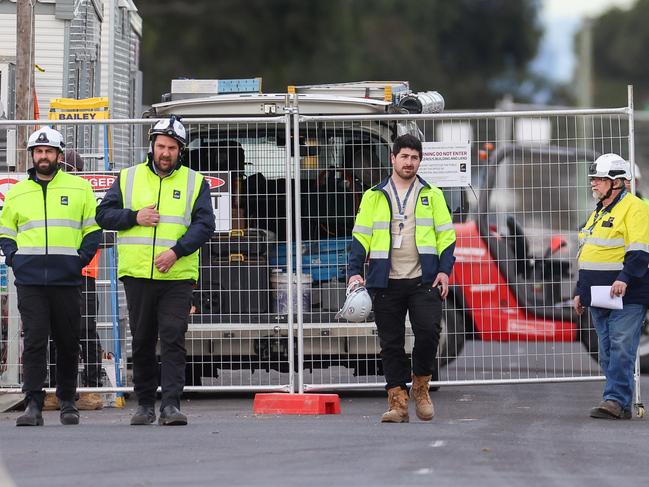Legionaires’ disease survivor Poki Matakovi speaks out after terrifying near-death experience
A Melbourne survivor of Legionnaires’ disease has revealed how what started as just a “croupy cough” brought him to death’s door as the number of Victorians infected continues to climb.
Victoria
Don't miss out on the headlines from Victoria. Followed categories will be added to My News.
A Melbourne legionnaires survivor has spoken out about his terrifying near-death experience as Derrimut and Laverton residents slam the government for keeping them in the dark.
When the Taylors Hill painter Poki Matakovi began feeling ill 10 days ago he assumed he was one of many Victorians battling the flu.
Melbourne’s deadly legionnaires outbreak was yet to hit the news and the usual winter illnesses, including Covid-19, were spreading throughout the community.
“I was having this croupy cough,” he told the Sunday Herald Sun.
“And then I started sweating ... and then it just got worse”.
A terrible fever then came next, with his wife Rita Matakovi saying he was “shaking and sweating all through the night”.

Ms Matakovi said five days later, on Monday this week, it was clear that this was not the flu.
“His legs could hardly hold him,” she said.
Ms Matakovi immediately called an ambulance, with paramedics – who performed an ECG – quickly rushing him to the Western Hospital in Sunshine where he was treated for pneumonia and sepsis.
“At that point we hadn’t heard about legionnaires,” Ms Matakovi said.
The following night, Mr Matakovi began suffering terrible chest pains and found himself crouching over in his hospital bed desperate for relief.
“A nurse checked his heart rate and immediately called in a code blue,” his wife said.
“He was suffering a cardiac arrest.”
He was then transferred to the Cardiac Care Unit (CCU) where he spent another two days recovering before being discharged.
Ms Matakovi said if they hadn’t gone to the hospital when they did “he would have been dead”.
“One of specialists who saved him when he went into cardiac arrest said if they hadn’t acted immediately he wouldn’t be here,” she said.

It was on their return home when they heard about the legionnaires outbreak on the news.
“He had all those symptoms, so we immediately thought that’s what it might have been,” she said.
By Wednesday afternoon, their suspicion was confirmed by the Department of Health. He was one of a growing number of Melburnians testing positive to the deadly disease.
As of Friday, Mr Matakovi was one of 71 Victorians infected, with another seven suspected cases notified – mostly in adults aged over 40 years.
Victorian chief health officer Dr Clare Looker on Friday said a woman in her 90s died on Tuesday after contracting the disease.
Despite fears the serious illness was spreading through Derrimut and Laverton North, the Department of Health did not respond to several questions on Saturday, telling the Sunday Herald Sun they would not be providing an update until Monday.
“The investigation of the Legionnaires outbreak and testing are continuing over the weekend,” a spokesperson said.
“The Department of Health will be providing an update on Monday via the active CHO alert.”

Ms Matakovi was among multiple residents who slammed the government and other authorities for keeping residents in Melbourne’s west in the dark.
“We still don’t know how he got it,” she said.
Michele Williams, a Western suburbs resident who lives near possible outbreak scenes of Laverton North and Derrimut, said she was frustrated by the “vaguness of information” from the government.
“I would have thought they would have come to some conclusion as to where it originated from by now,” she said.
While the origin of the outbreak was still unclear on Saturday, Ms Matakovi said she believed it could be linked to the Derrimut factory fire.
She said her husband was working at their cafe located just 80m from the factory when the explosion occurred on July 10.
“I told him to get inside because that’s all chemicals,” she said.
“Legionnaires takes 10 to 12 days to take effect and that coincides with the week of the factory fire.”
Police officers continued to guard the entrance to the site of the Derrimut factory fire on Saturday as the investigation into the blaze continued.
A pair of cops was stationed on Swann Drive managing traffic entering the site of what used to be the ACB Chemicals factory as the road remained closed to the public.

The officers said they did not know how much longer the investigation would go on for.
Fire Rescue Victoria said they were not aware of anyone who attended the fire contracting the infection, while the Environment Protection Authority no link had yet been discovered between the fire and the outbreak.
Authorities believe most people were exposed to the disease between July 5 and 20, and began showing symptoms on or after July 15.
Infectious diseases specialist and associate professor of medicine at The Australian National University, Sanjaya Senanayake, said while the factory fire was unlikely to be the origin it was possible if the fire disrupted a cooling tower.
“A fire could damage the running of a cooling tower potentially,” he said.
“You would have to look at when the cases started appearing, you’d probably give it at least five or six days (from the fire) for it to line up.”



